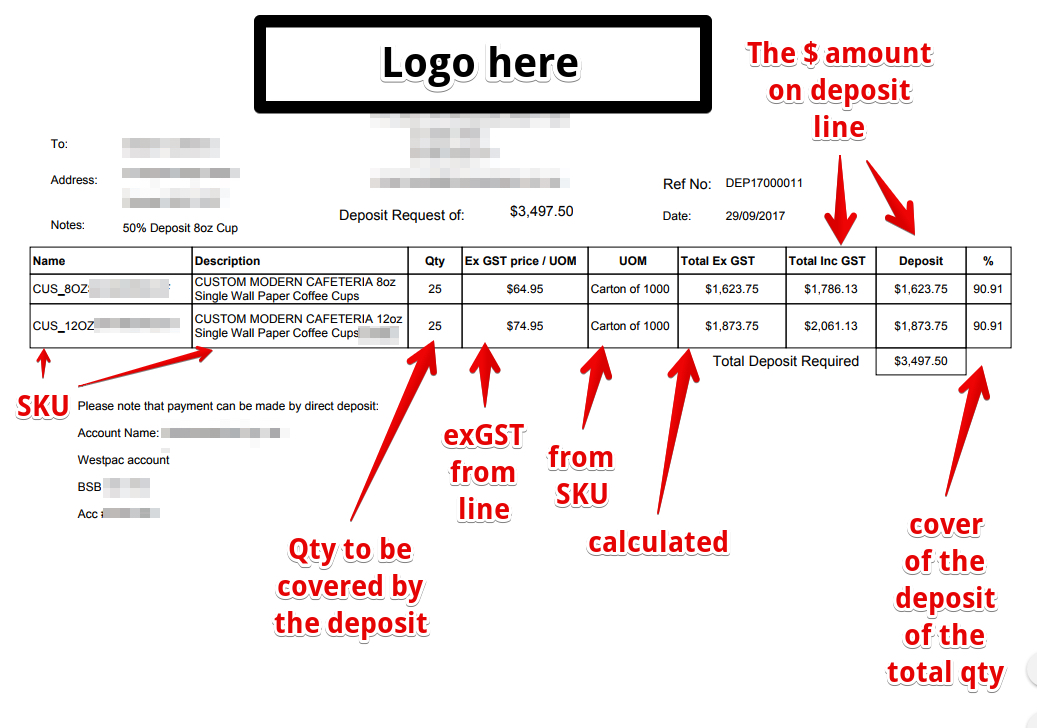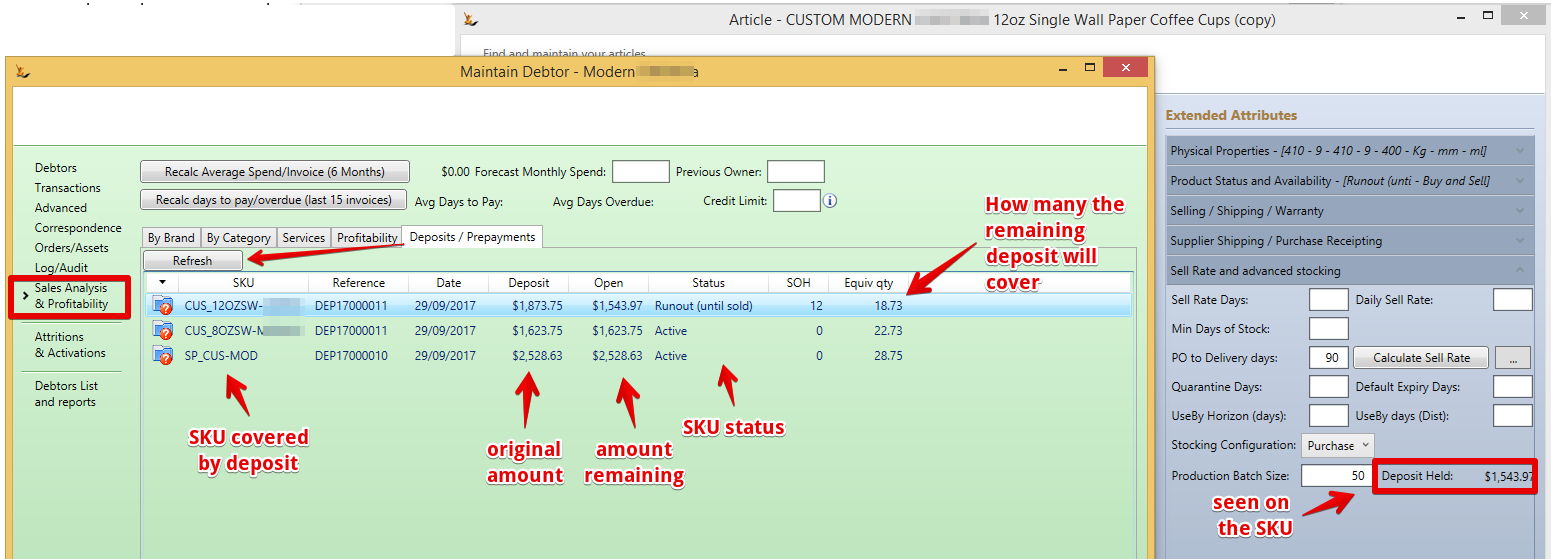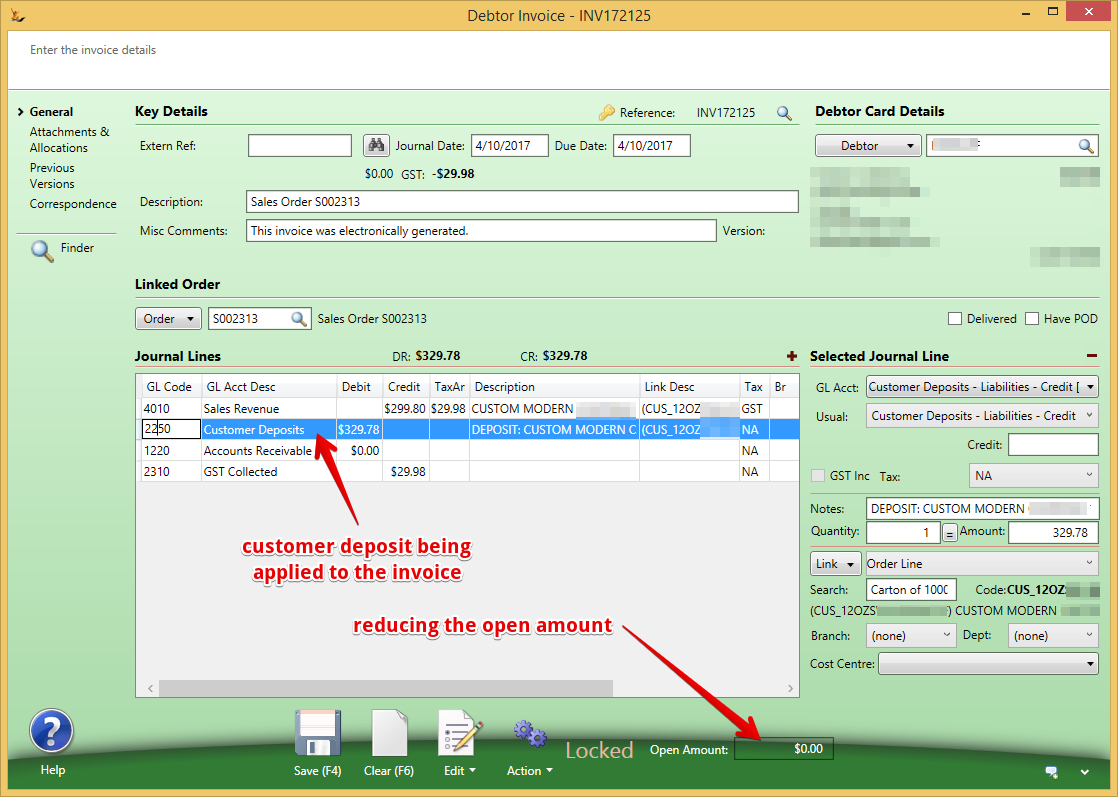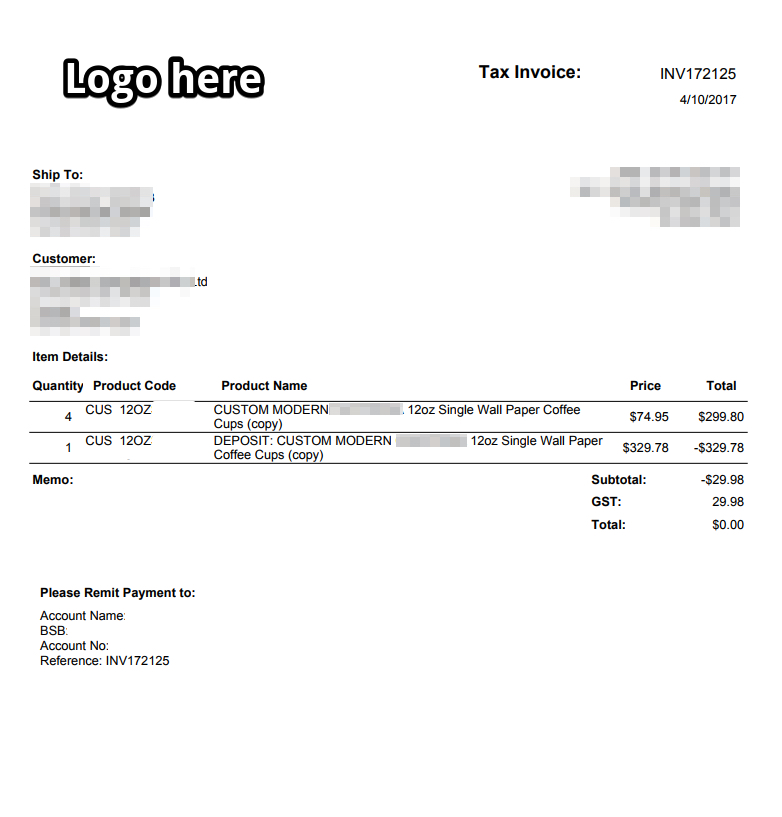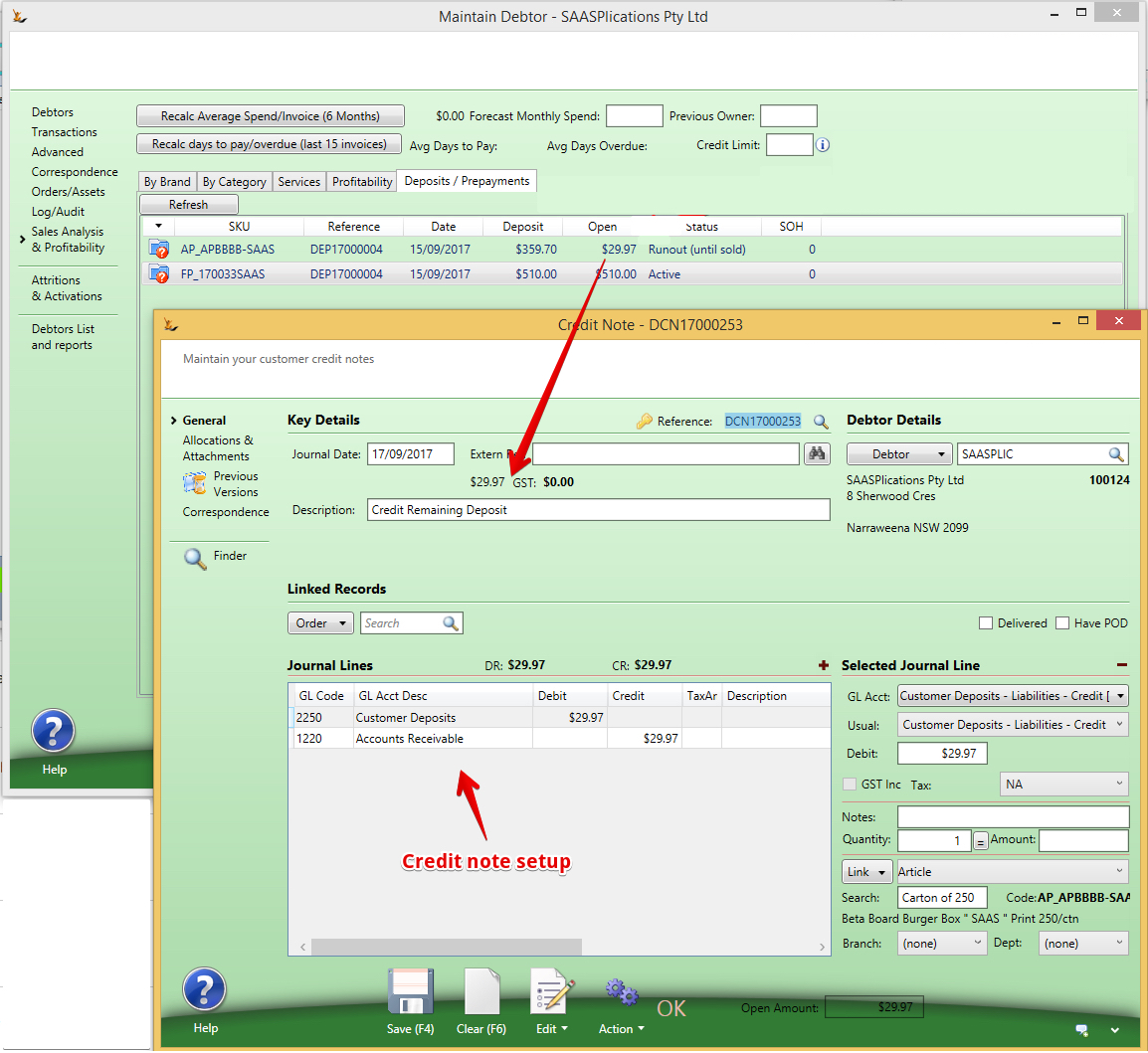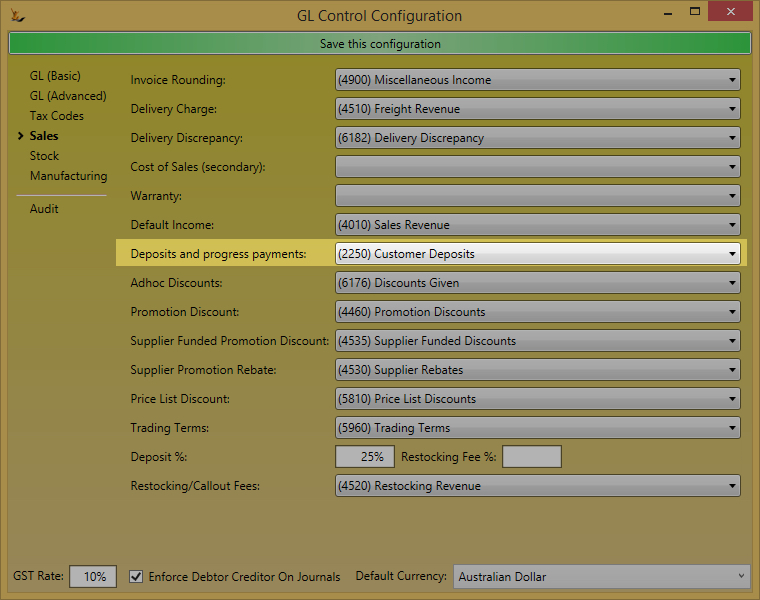Use Sidebar LHS to navigate
For global help click here
Deposits - specific to individual Items
Some deposits are held over individual items (an individual SKU (Stock Keeping Unit)) - normally the SKU would not be purchased by another customer (is personalised for example) or might be very expensive.
Deposits are on the balance sheet - but not in Accounts Receivable - so they are not available for allocation to invoices and effectively create a new balance of funds for a customer. A view of the outstanding deposits is visible from the Debtor.
If a deposit is being consumed and the product is an Articles of type Pack then a debtor invoice for either the Pack or the Component of the pack will consume the deposit.
The $ value of the remaining deposit can be seen on the SKU (across all deposits held for that SKU).
Example discussion
The explanation is helped by using an example.
- A customer wants some specific printed packaging - they want 400 a week and will order each week
- The supplier minimum order for printing is 5,000 units (3 months supply for that customer)
- The product is a Pack of 1,000 (A pack is 10 Inners of 100 each) so an order of 400 breaks a pack into components (4 Inners of 100 units).
- The customer wants to keep being able to order them - until giving 3 months notice of stopping. So it is to be a normally stocked item.
- The business decides that the deposit to be held will be 1.5 months stock (half of the purchase order requirement) - as this product cannot be sold to anyone else
- The deposit is created and linked to the packaging item
- Purchase orders are recommended based on sell rate like any other product (see Product Forecasting Based on Sales History)
- The customer calls and gives 3 months notice
- The Item status is changed to "Run Out" so it is no longer recommended for purchase by sales forecasting
- The deposit is now allocated to any invoices created by the system (the amount of the deposit allocated is calculated and based only on this product)
- Note that if the Item is a Pack or a member of a Pack - then the deposit will be used when either the pack or it's component are sold
- If the deposit requirement changes then some or all of the deposit can be converted to funds on the customer account at any time
A deposit may have multiple linked SKU's (one per line on the deposit)
- Each line links to a SKU
- Each line indicates the number of SKU items the deposit covers
- Each line on the deposit can be a different $ value
- Printing the deposit will show the % cover for each line on the deposit using the number of SKU's covered and their customer purchase price each
- The remaining deposit is seen on the SKU as a $ value
- The remaining deposit is seen from the debtor as a $ value and a number of equivalent SKU's
- If a SKU status is changed to "Run Out" then
- If the SKU is a Pack OR a member of a pack - both the pack and the pack member will move to "Run Out" status
- The deposit will be used on any invoice created for either the pack or the member
Example Deposit creation
Steps to create Manually
- Customer
- Total Deposit Amount
- Bank Account expected in
- Save
- This will create a deposit with no links to Items.
- The Control Account Deposit Line now needs to be split for each deposit it is covering
- Update Control Account Deposit Account lines (can add lines using + )
- Notes (shows on printout)
- Qty (used to calculate % cover)
- Amount (price ea exGST - used to calculate % cover)
- link to Article - choose SKU the deposit amount is for
- Once all lines are added / updated
- Save
- Note - can use the Order Link to link to a purchase order or sales order
Deposit Print Example
Remaining Deposit is visible on the customer
The equivalent qty of the deposit remaining is expressed in the units that the deposit is linked to - ie If it is linked to a pack = then the equivalent qty will use the average cost of the pack.
The Remaining Qty is for the SKU the deposit is linked to. If the deposit is linked to a "Pack" then the remaining qty includes the pack and the component quantity as a total qty.
Deposit applied to invoice (when being used up)
The deposit starts to be used immediately when
- The SKU status is RUNOUT. The deposit gets used immediately - it does not wait until the remaining stock level = the remaining deposit amount. This way you can decide when it is to start being used.
- The SKU does not have a Batch size
Note the invoice can have any number of items - the deposit lines added are only for the SKU involved.
Crediting Deposit at any time
If the deposit is to be reduced or removed and made available as general credit for the customer - create a credit note.
Deposit GL Control Account
For information about SaaSplications go to http://saasplications.com.au

